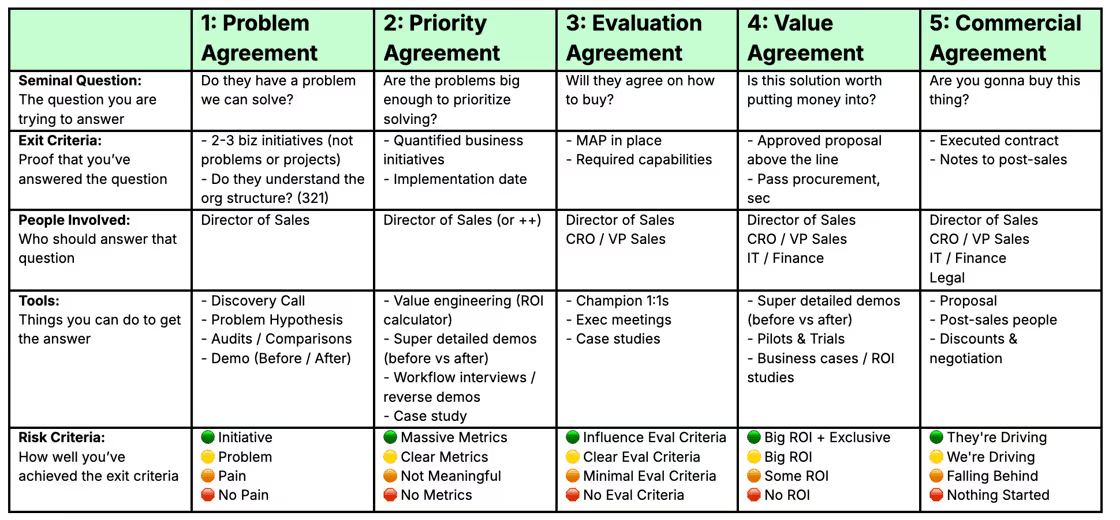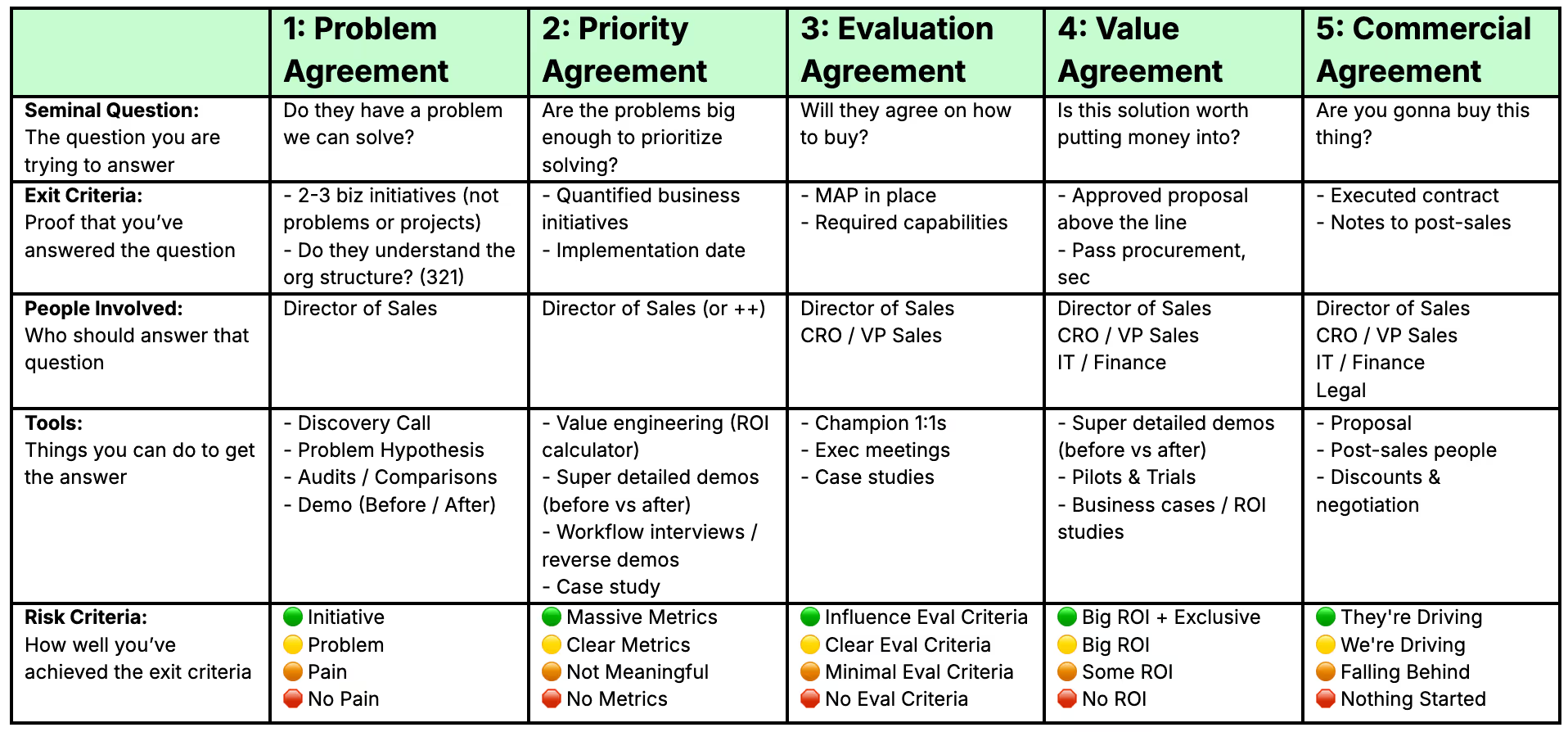Most new managers start in January and are back to being an AE by June.
The #1 killer for a manager? Getting reps to close deals predictably without micromanaging.
Your reps don’t know how to drive a sales process from disco to close.
You’re forecasting off gut and can’t trust your reps’ call without you being in the deal.
Your pipeline reviews feel like a massive waste of time (aka: deal storytime).
Mark Kosoglow led Outreach from $0-$250M+ ARR and taught me everything I know about getting my team to close deals predictably with his management operating system.
There are 3 core operating systems that Mark uses to land deals predictably:
- The 5-Stage Sales Process
- Forecasting
- Deal Reviews
Map The Path to Close With The 5-Stage Sales Process

Most managers run their sales process like this:
- Discovery
- Demo
- Proposal
- Check-In
Sound familiar? Here’s the problem:
- A meeting ≠ progress: A prospect might agree to a demo call. But why in the world would you schedule a demo if you never got a problem in discovery?
- You can skip meetings if the deal is hot: Why the hell would you set a deep dive demo call if they saw a 5 minute harbor tour and said "it looks good?"
Change your sales process from meetings to agreements you need to get at each stage. These are Mark’s 5 agreements:
- Problem Agreement: Do they have a problem we can solve that impacts the business?
- Priority Agreement: Are the problems big enough to prioritize solving?
- Evaluation Agreement: Will they agree on how to buy?
- Value Agreement: Is this solution worth putting money into?
- Commercial Agreement: Are you gonna buy this thing?
Here’s the trick: you can get all of these agreements in 1 call, 3 calls, or 20 calls. You could get all 5 agreements in a 1 call close, or need 5 calls to get solution agreement in an enterprise deal cycle alone.
Predict Those Deals With The 3 Step Forecasting Process

Now that you’ve mapped the path to close, you can forecast based on how well you achieved the exit criteria in each stage.
Step 1: The moment a deal has a business initiative and timeline, assess its risk:
- 🛑 Best Case (Lose): You will lose the deal if something doesn’t change.
- 🟠 Best Case (Push): You will push the deal if something doesn’t change.
- 🟡 Best Case (Win): You will win the deal, even though there’s some risk.
- 🟢 Commit (Lock): You will win the deal, with almost no risk.
Step 2: From there, your forecast equation includes 3 things:
Forecast = (🟢 Commit Lock) + (🟡 Best Case Win) + (Avg Create and Close In-Quarter)
Step 3: Now that you have your forecast, calculate your gap.
Your gap is the difference between your forecast and your goal:
Gap = Goal - Forecast
You close your gap by pulling from these 5 areas:
- 🛑 Best Case (Lose): Run creative plays to turn these deals around (ie: get execs involved).
- 🟠 Best Case (Push): Same as above.
- Pipeline from this quarter: Find business initiatives & timeline drivers on early stage deals.
- Pull-in from future quarters: Accelerate deals that are slated to close next quarter.
- More create & close: Find more create & close deals than what you already forecasted.
Run Deal Reviews That Actually Move Deals Forward

You can have the perfect sales process and forecasting method, but they mean nothing if your reps don’t follow them.
Most deal reviews are completely useless and turn into storytime.
A good deal review hits on the exit criteria you achieved for 20-30 deals without all the noise.
Here’s how Mark runs his deal reviews in 3 steps:
- Verify Deal Data: Start with the biggest deal in the pipeline and literally confirm the data out loud to make sure it’s correct (when you do this as the manager, there’s something that makes them hear it differently and realize they might have miscategorized a deal).
- Assess Forecast Risk: The coaching happens here. Look for 3 things:
- Funky Opportunity Sizes/Timelines: Abnormally big deals or short times to close.
- Weak Exit Criteria: Make sure they got problem agreement, not just ran a discovery call.
- Missed Risk: Do they truly understand what yellow vs red is?
- Plan Next Steps: Define the exit criteria you need next, and confirm there’s a meeting set to achieve it – not just a random touchpoint or meeting for the sake of a meeting.
And that’s a wrap, folks!
Want more on this? Well, you're in luck :)
Steal these free Leadership Operating System resources:

















